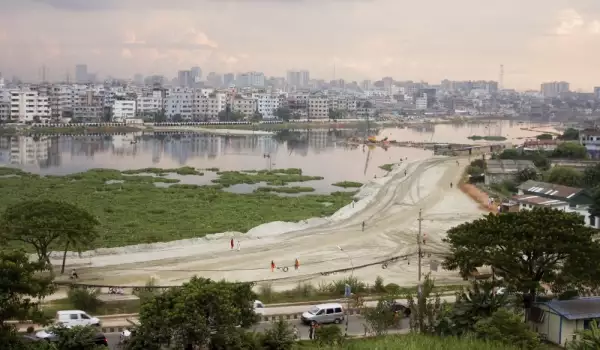Dhaka

Dhaka is the capital of Bangladesh. The town is situated on the River Buriganga. The population of the metropolis is around 12 million people, making it the ninth place in the rankings for most populated cities in the world. Dhaka is one of the largest and most colorful places in the region of South Asia. Because of its huge population, the town was known as the "rickshaw capital of the world". Approximately 400, 000 daily rickshaws transport visitors and residents of the city. In some parts of Dhaka, they are strictly forbidden. The reason – they often become the main prerequisite for traffic accidents and congestion.
The capital has a rich and colorful history. Dhaka is known as the "city of mosques". It has more than 13 centuries of history. By 1608, the city was contested by Indian, Turkish and Afghan rulers. Today, residents of Bangladesh are predominantly Muslim. Hinduism is the second most common religion in the country, which is inhabited by small communities of Buddhists and Christians.

True architectural and economic development of the city began in the XIX century, under the leadership of British invaders. In recent years, Dhaka updated its look with many modern skyscrapers and other buildings that are constantly changing the urban landscape. Mostly local development focuses on the service, manufacturing, finance and other important aspects of building the economy and tourism appeal of the Muslim state. Still unsolved is the problem of transport congestion in the populous capital. The population of Dhaka increases by 4, 2 percent annually. This local authorities face serious infrastructure problems and are already looking for solutions, thanks to foreign investment.
Along with many mosques, temples and churches among the biggest attractions in Dhaka is the National Memorial. There, visitors will have the opportunity to enjoy the cultural greatness of Bangladesh, expressed in many artefacts that tell the history of the country.

Another place you must visit is the castle Lalbah Fort, located in the southwest of Dhaka. The majestic building was built by the rulers of the city, in 1688.
Monument to the liberation of the country is the Mukti juddha museum. The building receives visitors every day except Sunday from 9 to 6:00.
Interesting to visitors is the pink castle-museum Ahsan Manzil, located on the River Buriganga River. The palace is also known as the residence of the royal family Nauab Dhaka.
Attractive building in the city is Curzon Hall, which is turned into an educational center in the country’s post- independence period. Curzon Hall symbolizes the traditions in science and development of Bangladesh.
Impressive architecture is found in the oldest building, the Supreme Court of Bangladesh, which was originally the residence of the British governor.
In Dhaka is the tenth largest mosque in the world - the Baitul Mukarram. Its capacity is 30 000 visitors.






